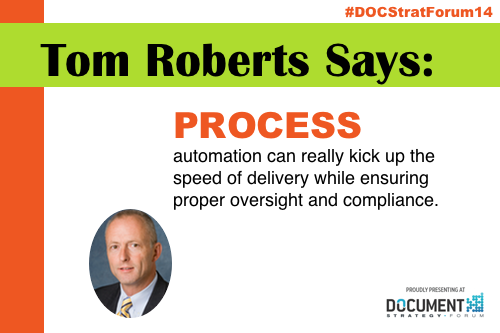
Everyone wants to get things done better, faster and cheaper. Yet, many firms are still struggling with multiple manual processes for their publishing review and approvals. A pragmatic approach to process automation can really kick up the speed of delivery while ensuring proper oversight and compliance.
The six steps below will help to set you up for a successful implementation.
1. Consolidate processes to a manageable few
Don’t try to force everyone into a single rigid process, as depending on the number of unique business areas you’ve got, there are likely needs for variant processes. A select few processes will help to address enterprise consistency while enabling business area specific needs.
2. Solidify the process before automating
2. Solidify the process before automating
After you’ve consolidated disparate processes, there will likely be adjustments made to optimize the newly aligned process(es). Consider a three- to six-month break-in period before applying automation. Significant changes to the process may be more expensive to change once the automation has been built.
3. Create a single entry point
3. Create a single entry point
Regardless of number of workflow applications that feed business requests into the publishing process, leverage the workflows to create a common entry point to the publishing process that is designed to capture the key information and data for each request.
4. Engage all the right departments
4. Engage all the right departments
Normally, this will include business areas and document owners, legal/compliance and IT, in addition to the publishing team. While you may not need to automate every step executed within a specific area, avoid the black box approach where all you get is an entry and exit point. For shorter durations, this may suffice, but if you’d be uncomfortable not knowing if progress is being made over an expected period of time, break it down to lower levels so that your needed level of transparency is achieved.
5. Address the full life cycle
5. Address the full life cycle
Visibility throughout the life cycle is critical when managing many projects and changes all flowing through the pipeline simultaneously. Ensure that you include all steps in a process from the creation of the request through to production deployment.
6. Define the metrics you want to collect
6. Define the metrics you want to collect
Consider how you intend to measure your ongoing process and what metrics help tell your story of improvement. Define the metrics up front so the appropriate data capture and reporting can be planned into the workflow system. Maintaining momentum within your publishing program depends on selling your story with documented benefits.
By following the six set up steps above, you can ensure that your workflow automation effort will return specific benefits in terms of time savings and cost effectiveness.
By following the six set up steps above, you can ensure that your workflow automation effort will return specific benefits in terms of time savings and cost effectiveness.
Mr. Roberts will be presenting on Tuesday, May 13, 2014 at the DOCUMENT Strategy Forum. Don't miss his Power Session M304/M305 “The Next Chapter: Creating a Seamless Multi-Channel Communications Approach That Really Works.” For more information, visit www.DOCUMENTstrategyForum.com.
















